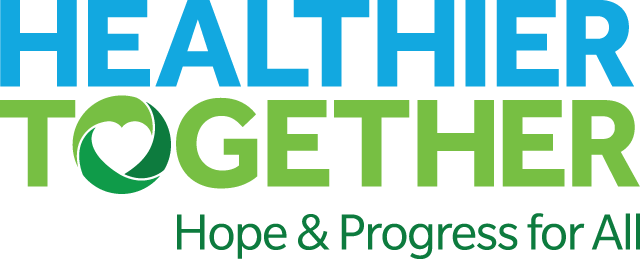

Frequently Asked Questions
What is HEALTHIER TOGETHER?
HEALTHIER TOGETHER is the only community-based movement that seeks to transform our metro east counties into the top 25% of healthiest counties in Illinois by 2025, by creating opportunities so all residents can experience a safer, healthier quality of life. Currently, we are focusing on six areas where we know there is a need to improve.
What is HEALTHIER TOGETHER's mission and purpose?
Our mission is to create a healthier metro east region; and our purpose is to create opportunities for all citizens of the metro east area to achieve their best possible health.
Who oversees the HEALTHIER TOGETHER movement?
The HEALTHIER TOGETHER movement is 100% volunteer driven and governed by an independent Council of Partners whose members include leaders in the healthcare, business, faith, education and local government sectors. The movement seeks to support the efforts of work groups comprised of over 85 volunteers representing over 45 service organizations, currently dedicated to working together to improve community health and overall quality of life.
What are HEALTHIER TOGETHER's strategic focus areas?
Currently, our efforts are focused on six areas where we know there is need to improve. These areas include:
- Chronic Disease Prevention
- Community Safety
- Education
- Maternal & Child Health
- Mental Health
- Substance Use Disorder
How are HEALTHIER TOGETHER's strategic focus areas determined?
HEALTHIER TOGETHER's strategic focus areas are determined through a concensus building process among the partner organizations. This process works to align with and support the Community Health Improvement Plans (CHIPs) of many of our metro east hospitals, local health departments and other Qualified Health Centers.
Why is the HEALTHIER TOGETHER movement so important?
For the last ten years, several counties in the metro east region have consistently ranked high for poor health and low for quality of life when compared with Illinois' 102 counties, despite having some of the highest quality of health care in our country.
According to the socio-ecological model of health, only 20% of a population's health is directly influenced by healthcare organizations like hospitals or health departments. The remaining 80% of a population's health is influenced by schools, churches, workplaces, community centers and the quality of our neighborhoods.
The health of our communities is everyone’s responsibility so we need to take an approach that incorporates everyone’s resources & support.
